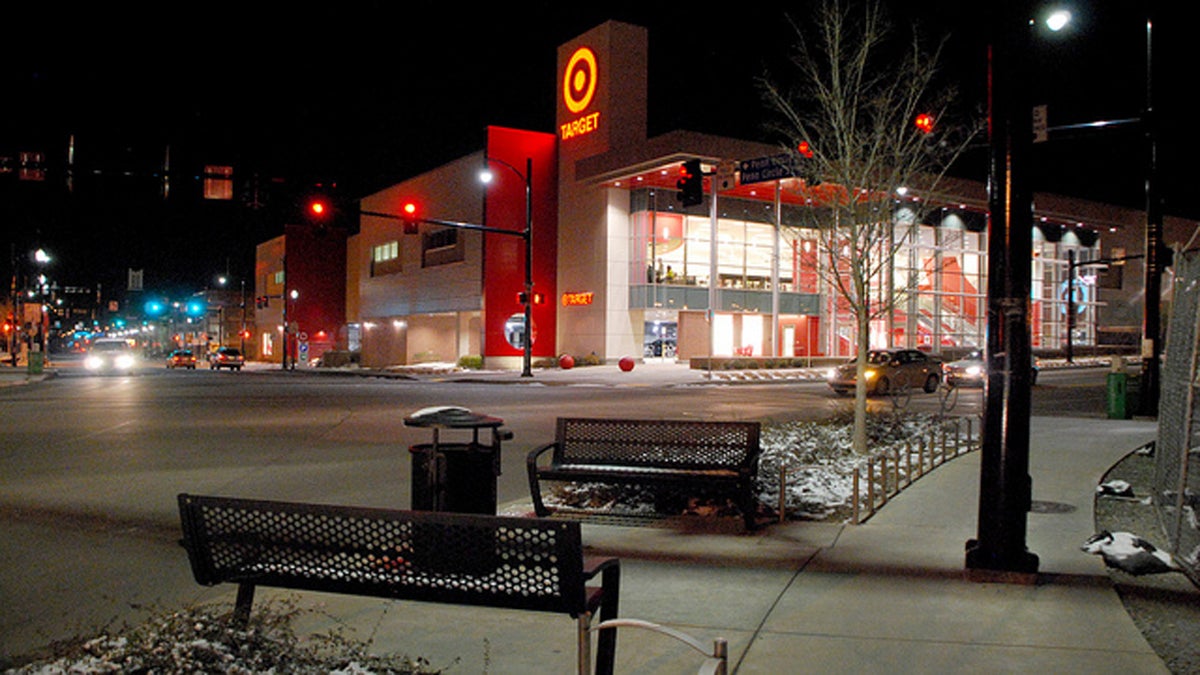Pittsburgh looks to East Liberty model for transit-oriented development in Homewood

The Target Store was the anchor of East Liberty's TRID plan, though the store went in well before the TRID was officially created in late 2013. (Photo via Flickr by BeyondDC)
Homewood, once the home of Andrew Carnegie and George Westinghouse, has had more than its share of economic troubles in recent decades.
According to data available from PGHSNAP, Homewood had a population of nearly 31,000 people in 1940. By 2010, that number had decreased 79 percent to 6,442. In 2009, the median income was just under $20,000, and in 2010, 46 percent of residents were living under the poverty level.
This story was first published by partner station WESA in Pittsburgh, Pennsylvania.
Homewood, once the home of Andrew Carnegie and George Westinghouse, has had more than its share of economic troubles in recent decades.
According to data available from PGHSNAP, Homewood had a population of nearly 31,000 people in 1940. By 2010, that number had decreased 79 percent to 6,442. In 2009, the median income was just under $20,000, and in 2010, 46 percent of residents were living under the poverty level.
But just to the south of Homewood sits Point Breeze North, with a median income of $35,041 in 2009. If you move south of Penn Avenue to Point Breeze proper, that figure jumps to $87,082.
It’s that tax bracket that Councilman Ricky Burgess is hoping he can capture with the creation of a Transit Revitalization Investment District, or TRID.
“You can’t do development in the heart of troubled neighborhoods, because there is not the capacity to maintain the project,” Burgess said in a recent City Council meeting. “You have to incrementally start from the strong edges. In Homewood, you’d start with Homewood South. It is right next to North Point Breeze, closest to East Liberty, so you’d start developing there.”
A TRID is a tax increment financing mechanism that is based around a transit node, in this case, the Homewood stop on the Martin Luther King, Jr. east busway.
The busway is already the nexus of one TRID in the East Liberty neighborhood, with the Target store as its anchor development.
“The Homewood station, although in Homewood, is on the border of Homewood and North Point Breeze,” Burgess said. “When you draw the half mile radius, it goes in a circular area, so there is a fairly more stable, more affluent area within a half mile of the Homewood station.”
The first step in establishing the TRID is performing a feasibility study. The Urban Redevelopment Authority is spearheading that effort and a request for proposals will close on Tuesday.
Emily Mitchell, a planning and design specialist at the URA, said the study will show if a TRID is even feasible for the Homewood South area.
“(If) a TRID is not feasible … the study will give us recommendations on what to do to make that TRID feasible or other recommendations to spur development,” Mitchell said.
In the case of the East Liberty TRID, more than three years passed between the city’s initial RFP and the creation of the district in late 2013.
The city has received a $75,000 grant from the Pennsylvania Department of Community and Economic development for the Homewood TRID study and is putting up $25,000 in matching funds. Initially those funds were to come from federal Community Development Block Grant money, but City Council recently gave preliminary approval to a proposal to use city bond funds instead.
Council will take a final vote on that legislation Tuesday.
WHYY is your source for fact-based, in-depth journalism and information. As a nonprofit organization, we rely on financial support from readers like you. Please give today.


